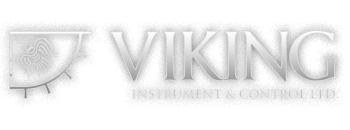Temperature monitoring is clearly one of the most critical aspects in food production. There are many steps in food production where time and temperature must be monitored to control the growth of harmful microorganisms that can cause illnesses. Harmful microorganisms grow well in food between the temperatures of 41oF and 135oF. This range in temperature is typically referred to as the Temperature Danger Zone. When food is kept within this Temperature Danger Zone for more than 4 hours, harmful bacteria would already have grown and multiplied. Ensuring proper control of time and temperature is done through different types of thermometers – Ashcroft bimetal thermometers, thermocouples and thermistors, infrared thermometers and other temperature measuring devices.
Ashcroft bimetal thermometers for food processing
The Ashcroft bimetal thermometers are the most common and most versatile kind of thermometer used in food production due to its adjustable calibration nut that keeps it accurate, easy-to-read numbered temperature markings, a dimple to mark the end of the sensing area and, of course, accuracy. Another good thing about thing about this thermometer is the speed of reading temperature usually within 15 to 20 seconds. However, this kind of thermometer should be used near the end of cooking time to check the internal temperature of food. The probe of the ashcroft bimetal thermometer must be inserted the full length of the sensing area which is usually 2 to 3 inches to gain the most accurate temperature reading.
General thermometer guidelines
- Thermometers used for food production must always be kept clean and this includes their storage cases. The probe or stem of the thermometer should be cleaned and sanitized before it is used. Never immerse the entire thermometer in water so as not to ruin it.
- Calibration is very important for ashcroft bimetal thermometers. It should be calibrated daily and every time it is dropped to maintain accuracy of readings. Other types of thermometers must be returned to the manufacturer for calibration.
- Only ashcroft bimetal thermometers must be used to monitor temperature in food; never those filled with mercury or fluids. In order to maintain accuracy, the thermometer must always be used properly. The manufacturer’s manual provides the instructions on how far the thermometer must be inserted into food to reflect the internal temperature.
- The thermometer stem or probe must be inserted into the thickest part of food away from bone, fat or gristle to measure accurate internal temperature.
- Always wait for 30 seconds or until the indicator stops moving before recording the temperature.
How the Ashcroft bimetal thermometers are calibrated
In order to maintain the accuracy of temperature readings, the ashcroft bimetal thermometers must be calibrated through two acceptable methods:
- Boiling method – used in elevations of more 1,000 feet or less. The temperature probe or stem is placed in boiling water until the sensing area is submerged. If you are not definite about your elevation, use the ice-point method.
- Ice-point method – where the temperature stem or probe is placed in ice water until the sensing area is submerged.


